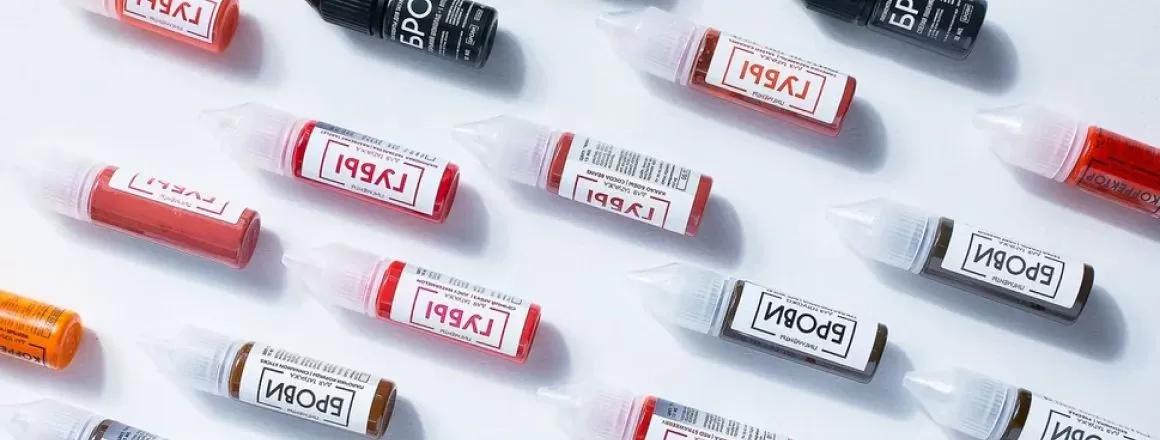Standard shelf life
Questions about the shelf life of pigments for permanent makeup arise from our customers more and more often. Let us tell you everything about it.
For starters, the most important thing: the bottling date is indicated on the ink bottle. From that moment, the ink shelf life in a closed bottle is 24 months (2 years). From the moment you open the bottle, we recommend using the ink within 12 months (1 year).
Why exactly 2 years in a closed bottle?
Is 2 years a limit for pigments?
We indicate such a time limit because many fillers that are the basis of ink tend to lose their properties over time. These properties are antimicrobial.
And the only thing that happens to the ink when it loses its properties is the reproduction of bacteria, which somehow end up in the water. There have been studies on this topic, there's also practical experience accumulated. We have seen it with our own eyes.
And you have most likely seen the ink that has spent a long time on the shelf, how it falls apart into flakes and cannot be stirred well by shaking. Or turns into a multi-colored paste.
This is what expired ink looks like. Every PMU artist probably has such a bottle standing somewhere.
Where there is water, there is life
There’s a reason smart people use that phrase.
What's going on there? Bacteria grow in an enclosed space and feast on pigment particles, making the ink more difficult to implant and the results look worse after healing. Hence the low-quality PMU or very small retention after implantation. And then, your frustrated clients are eager to sue you for everything you have.
But do not rush to be afraid, all this doesn't happen all at once. Under adequate storage conditions, pigments have a long shelf life.
But pigments by this manufacturer have a longer shelf life!
Sometimes we are told that a certain competitor does things differently and indicates the shelf life of 3–4 years on the label.
Formally, these figures can be confirmed in practice. The questions are why this is done and by means of what.
First, the manufacturer is trying to achieve such shelf life to be able to sell them for longer periods. Thus, you may want to start asking some questions about the popularity and quality of these pigments, if they have to increase the sale period by as much as 1.5-2 times.
Secondly, it is safe to assume that the composition of these pigments was modified. First of all, there are additional preservatives involved. In particular, this could be the antimicrobial additive DMDM Hydantoin, which is often found in such or similar products. These substances are highly effective in prolonging the shelf life of pigments. But at the same time, the risks of allergic reactions and other consequences that are not the most beneficial for the body are also high.
These compositions are remnants of the past. Alcohols are quite enough to restrain the development of bacteria in suspension for a long time. And most importantly, they cause no harm to a person.
Is it worth it to increase the shelf life?
Our stance is that a manufacturer of high-quality pigments that are in demand on the market will not use outdated and questionable technologies in terms of their impact on health to increase the shelf life of their product. And even more so, such manufacturers will not frankly distort information about the product shelf life on their packaging.
Knowing our regular customers—experienced permanent makeup artists—we see that a 15 ml bottle of pigment is barely enough for 1 month, provided the treatments are performed daily.
Therefore, reasoning about the shelf life of several years in relation to popular pigments is rather a theory.





